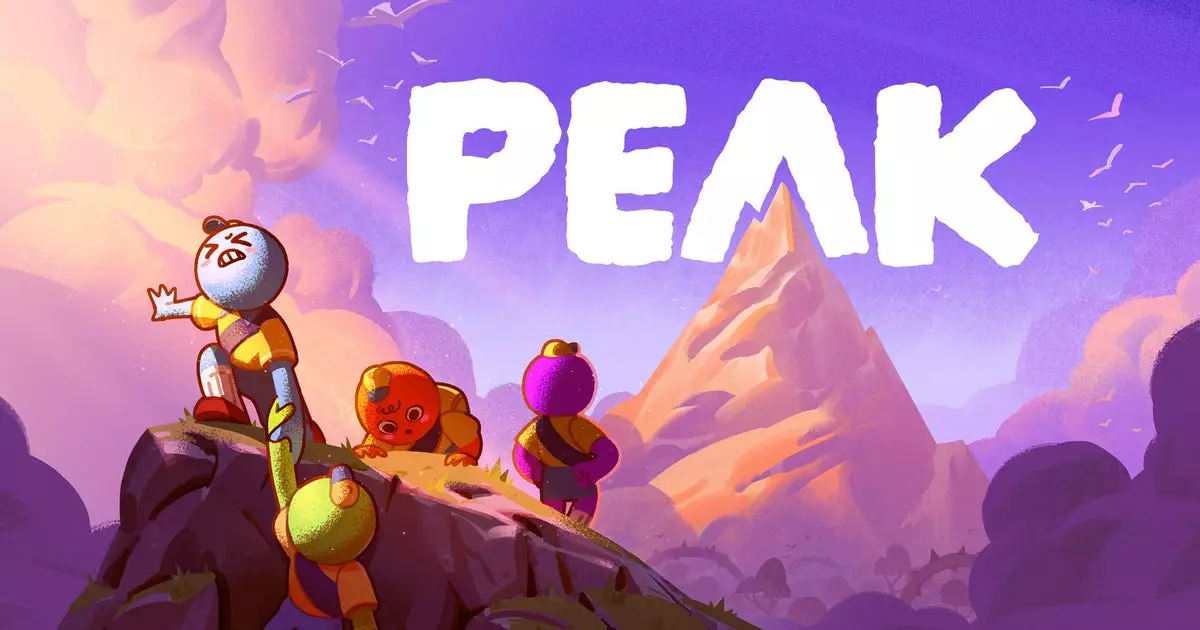In the ever-evolving world of game development, creativity often meets unpredictability, leading to extraordinary results. The story of “Peak,” a co-op video game that invites players to reach new heights—both literally and metaphorically—exemplifies this phenomenon. Emerging from a competitive environment fueled by friendly rivalry, the game’s conception and creation tell a tale of passion, experimentation, and collaboration between two indie developers, Aggro Crab and Landfall. What makes “Peak” so fascinating is not merely its innovative mechanics but the unique circumstances under which it was birthed.
Fueling the Fire of Competition
A surprising catalyst for the creation of “Peak” was not just artistic vision but a sense of jealousy, at least as stated by Aggro Crab’s head, Nick Kaman. When the developers discovered that their contemporaries at Landfall had created a successful game during a similar one-month game jam, it ignited a flame of desire within the Aggro Crab team to join in on the fun. This competitive spirit is not just an anecdote; it reflects a larger truth in the realm of creativity—the drive to create often springs from external pressures. However, it’s essential to recognize that competition can take different forms, and for these developers, it was a healthy one, pushing them out of their comfort zones and into a whirlwind of innovative thinking.
The Sprint through Creativity: A Game Jam Experience
Embarking on a month-long creative sprint at an Airbnb in Korea, the developers worked passionately, fueled by both caffeine and camaraderie. The atmosphere was ripe for creativity, filled with brainstorming sessions interspersed with food runs—a combination that not only nourished their bodies but also fueled collective ideation. This environment, albeit intense, offered them the freedom to explore ideas without the heavy weight of expectations that usually accompany longer development cycles.
It’s intriguing that the foundations of “Peak” were initially conceived in a hot tub in Sweden, showcasing how inspiration can arise in unexpected places. Such moments of casual brainstorming often serve as breeding grounds for innovation. The initial concept, which revolved around lost scouts on an island, hinted at a more complex world filled with slapstick humor and dark undertones—a stark contrast to the final product that centers on cooperative mountain climbing.
Lessons from the Journey: Quality over Quantity
While “Peak” has achieved impressive commercial success, it’s essential to unpack the narrative surrounding its development. The rapid creation in just one month should not mislead aspiring developers into thinking that fleeting creativity is a surefire path to success. The developers’ prior experiences, skill set, and infectious enthusiasm for the project played a pivotal role in its favorable reception. Both Kaman and his colleagues at Aggro Crab, along with their counterparts at Landfall, possess extensive backgrounds within the gaming industry, which undoubtedly informed their rapid design decisions and ultimate success.
One cannot ignore the fact that the process of making “Peak” was underpinned by years of hard work, learning, and refining their craft prior to this venture. Their combined experiences resulted in a synergy that enhanced their creative outputs. Such collaborations are emblematic of the evolving indie game culture, where sharing resources, knowledge, and support often leads to unprecedented innovation.
Celebrating Collaboration
“Peak” epitomizes the power of collaboration in the gaming industry. This project is not merely a product of competition but one fueled by a sense of community and shared goals among indie developers. Their willingness to collaborate, to share spaces, and to respond to each other’s creative sparks is a testament to the new wave of gaming culture that emphasizes inclusivity.
As the industry continues to grow, we should celebrate these moments of kinship that stimulate breakthroughs and foster environments where creativity can flourish. It’s a reminder to all developers that stepping outside of just solitary development can lead to remarkable results, enriching both their experiences and the games they create.
In the end, “Peak” is more than just a game—it’s a beacon highlighting the power of collaboration, the weight of competition, and the beauty of spontaneity in creative processes.

